A www.blueeyedbirder.com Suffolk adventure:
It was a misty start and damp underfoot although the air was
dry which was a little peculiar. We met at Carlton Marshes and walked out along
the footpath towards Petos. Blackcap,
Willow Warbler, Sedge Warbler and Chiffchaffs were all in song and a Cetti’s
shouted over the top of them. I had just
remarked about the chance of a Barn Owl when one appeared in front of us and
effortlessly hunting the damp pasture.
From looking at our pictures it looks like it may have lost its left eye
which could explain it rather ropey landings!
 |
| Barn Owl |
 |
Wood Pigeon
|
One of the Sedge Warblers eventually showed itself which was
a relief after the little buggers hiding all day yesterday and a couple of
Meadow Pipits were engaged in half hearted parachuting. The dead Reed and Great Willowherb stems were
festooned with the drooping webs of Larinioides cornutus webs which were
covered in droplets from the mist that was slowly lifting.
 |
Dancing Midges
|
 |
| Furrow Orb Weaver web - Larinioides cornutus |
 |
| Misty Cows - Enid Barrie |
 |
| Furrow Orb Weaver web - Larinioides cornutus - Enid Barrie |
 |
| Sedge Warbler - Philippa Carr |
Chinese Water Deer glared at us from the Sedges while Rooks
and Jackdaws probed around them and Brown Hares lolloped from one clump to the
next. A pair of Stonechats popped up and Reed buntings were considering getting
started but the chill grey conditions were obviously stymying any enthusiasm.
 |
| Chinese Water Deer |
 |
| Pond Rush |
Once down at Petos a Great White Egret was predictably on
view and we spent the next couple of hours scanning the pools and scrapes in
ever improving light. A couple of
Swallows twittered over and Lapwing, Redshank and Avocet were all displaying
across the marsh. The hunt for Wagtails
only gave us a solitary Pied but all that looking did produced two Little Ringed
Plovers, five hidden Snipe and a smattering of Wigeon and Teal and pleasingly,
a drake Garganey that must have had a snorkel given the amount of time it spent
with its head under the water!
 |
| Great White Egret |
 |
| Greylag, Canacle and Barnacle |
 |
| Avocet bust up and unamused Shovelers |
Two Bitterns were booming from the west side of the track –
one of which was quite close and two male Wheatears were stop-start running
around the field, gleaming with peachiness.
Two Bitterns suddenly came out of the distant reeds and performed a
lengthy chase across the marsh before both dropping out of view. Regardless of
the distance, it was still a great encounter.
 |
| Bittern |
Sedge Warblers were now warming up and some were engaging in
display flights while a melancholy Mistle Thrush sung from the north side of
the river. Marsh Harriers and Buzzards
were always on view and it was blue sky by the time we turned back and a
gleaming russet Red Kite was added to the list along with two Kestrels. A
second Great White Egret dropped in and in the ditch below the Water Soldier
was almost at the surface for another season.
I used to have this in my pond at home when I was a kid.
 |
| Water Soldier |
 |
| Great White Egret |
 |
| Red Kite |
A couple of Peacocks drifted by and a Nursery Web Spider
lounged on a leaf but was not quite ready for action. Chironomid Midges danced
in clouds of thousands along the path and a couple of newly emerged Alder Flies
alighted on me as we walked along. The
Cigar Galls of Lipara lucens were evident in the Phragmites wherever we looked.
 |
| Lipara lucens |
 |
| Lipara lucens - the cigar gall |
The Grasshopper Warblers refused to sing but we did find a
couple of hidden pinging Bearded Tits and several musical Linnets but with the
appearance of the sun, the site was becoming very busy very quickly and so we
retreated for a coffee and cake after a successful morning out.
 |
| Brown Hare - Antony Wren |
North just a short way to Gunton Woods where the sun was now
beating down at a heady 15c and a short circuit of this cliff top site was most
productive with at least one male Firecrest being seen well and heard singing
and taking a string dislike to the pair of Goldcrests that we found building a
nest in some Ivy on a sapling. A glance up as a small bird flew in gave us all
good views of a female Brambling which is always a bonus addition on a
mid-April day out. Greenfinches wheezed
overhead and punters screamed in Pleasurewood Hills beyond.
 |
| Brambling |
There was a fine mix of quite aged native trees with some
interesting flora beneath including native Tutsan, Primroses, Wood Anemone and
Comfrey and non-native Alexanders, Few-flowered Garlic and Flowering Currant. The Rabbit cropped edged had Early Forget-me-Not
and Storksbill and attending Hoverflies and Dark-edged Bee-flies but a male
Brimstone was the only Butterfly seen.
 |
| Early Forget-me-Not |
 |
| Storksbill |
 |
| Wood Anemone |
 |
| Comfrey |
 |
| Green Alkanet |
 |
| Tutsan - two stem ridges |
 |
| Young Horse Chestnut leaves |
 |
| Few-flowered Garlic - great taste! |
 |
| Flowering Currant |
 |
| Primroses |
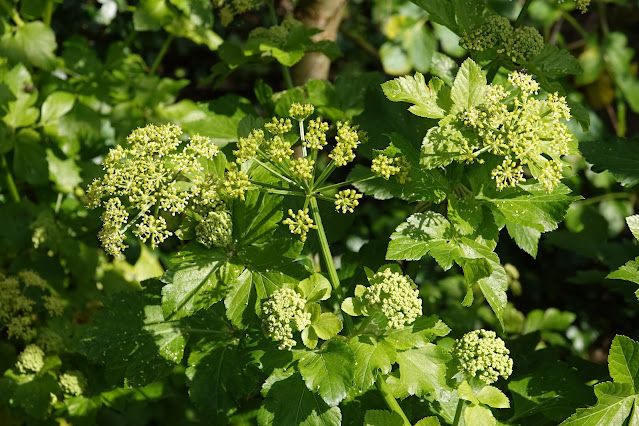 |
| Alexanders |
 |
| Melangyna cincta - a new one for me |
 |
| Syrphus sp - male |
 |
| Bombylius major |
Lunch in the car park and then across the road to Gunton
Warren. It was pretty bird free
(although Antony and I did hear a Whitethroat as we pulled up). The potential for migrant landfall here is
amazing with cliff top and undercliff to search in the right conditions. I was just amazed I had not been pointed at
it before. It is largely an area of
Bracken, Gorse and open areas dotted with Ectoedemia heringella infested Holm
Oaks and the odd Rowan, Sycamore and Hawthorn.
It felt ‘rare’.
 |
| Ectoedemia heringella |
 |
| Norway Maple flowers |
 |
| Sea Buckthorn |
Insects held most of our attention with several Emperor
Moths attracted easily and feisty Green Tiger Beetles dashing across the bare
areas before flying a short way and starting again. As usual they were
difficult to track. We crossed the road and came back through the very warm and
sheltered Pine, Aspen and Poplar belt
and in this sun trap we found a wealth of insects on the highly scented
Alexanders.
 |
| Emperor Moth |
 |
| Green Tiger Beetle |
 |
| Green Tiger Beetle - so cryptic |
There was a good selection of commoner Hoverflies with the
bonus of only my second Didea fasciata. Calliphora vicina was common along with
several almost bronzy Eudasyphora cyanella and a small Gymnocheta viridis.
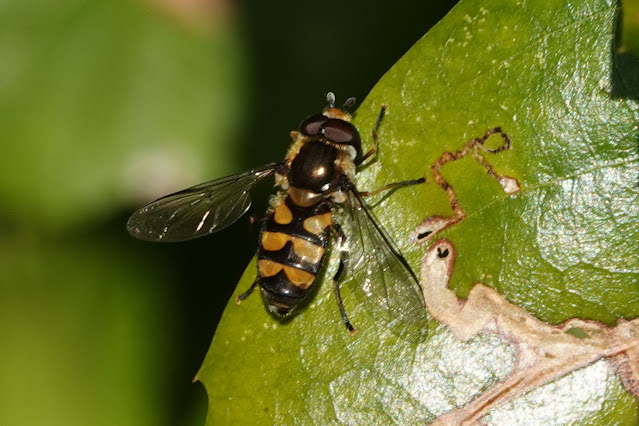 |
| Didea fasciata |
 |
| Didea fasciata |
 |
| possibly a male Platycheirus albimanus |
 |
| female Platycheirus albimanus - Antony Wren |
 |
| Myathropa florea |
 |
| Eristalis pertinax |
 |
| Syrphus ribesii - hind leg seen well |
 |
| Helophilus pendulus |
 |
| Epistrophe eligans |
 |
| Eupeodes corollae |
 |
| Eudasyphora cyanella |
 |
| Eudasyphora cyanella |
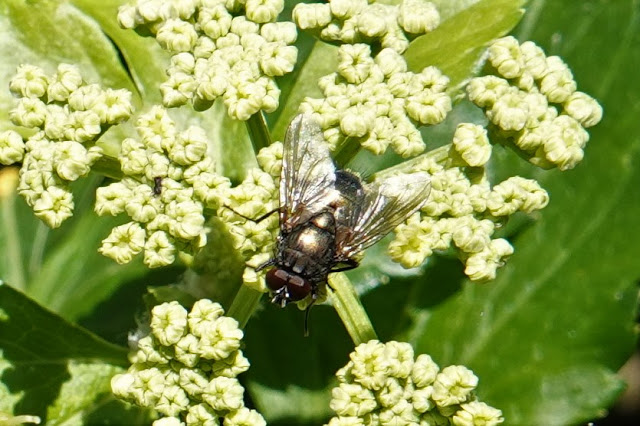 |
| Eudasyphora cyanella |
 |
| Eudasyphora cyanella |
 |
| Gymnocheta viridis |
 |
| Calliphora vicina |
 |
| Calliphora vicina |
A few Bee-flies were seen and Bombus
pascuorum, terrestris and lapidarius were cruising around along with Andrena
flavipes and a nice orangey Andrena nitida. A single Nomada goodeniana was seen on a sandy area.
 |
| Andrena nitida - Antony Wren |
 |
| Bombus pascuorum |
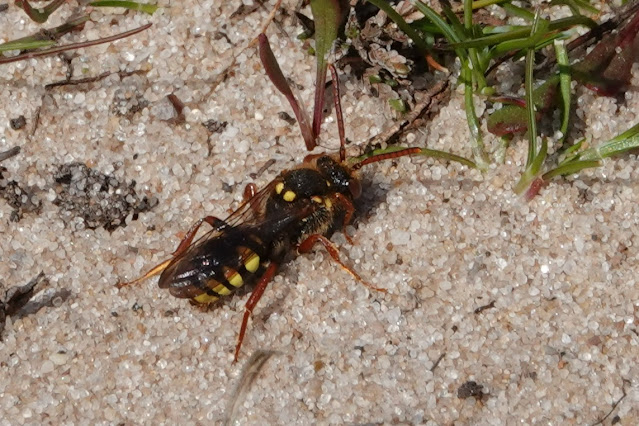 |
| Nomada goodeniana |
It was so good to feel warm!
On again back into Lowestoft to Ness Point for the outside
chance of a late Purple Sandpiper. In
fact we were lucky and found two although they were feeding alone behind the
bulk of the breakwater and we only saw them when a large wave pushed them off
towards the harbour. The Turnstones were
a little more photogenic and posed on the slipway and outside the Birds Eye
gates as usual!
 |
| lounging Turnstones - Antony Wren |
 |
Chilled Turnstone - Antony Wren
|
This left us with one final stop in the middle of town to
get up close to the Kittiwakes. They
were utilising the newish plank stack on the side of a building as well as
every other available space in the entire block that also included the main
church and all its ledges and crenelations. The noise was wondrous and
incredibly loud as it echoed off the houses and offices and came with that
unique fishy seabird colony smell. The only
difference between Lowestoft and Bempton Kittiwake watching is the looking up
rather than looking down.
 |
| Should have taken down the scaffolding earlier! |
 |
| Kittiwakes from the car park roof - Antony Wren |
It was a fitting end to another fine day in the field.
The following morning there were some moths in the trap back
at the Wrens which also suggested that the season are finally changing and even
the Anthophora plumipes were back whizzing around the garden although it was a
little chilly once again. A brief stop
at Abberton Reservoir on the way home gave me both Common and Lesser Whitethroats
by the Centre and Yellow Wagtails and my first Common Terns from the Layer de la
Haye causeway. Now to get sorted for
Lesvos on Thursday.
 |
| Early Grey |
 |
| Frosted Green |
 |
| Hebrew Character |
 |
| Brindled Beauty |
 |
| Powdered Quaker |
 |
| Garden Carpet |
 |
| March Moth |
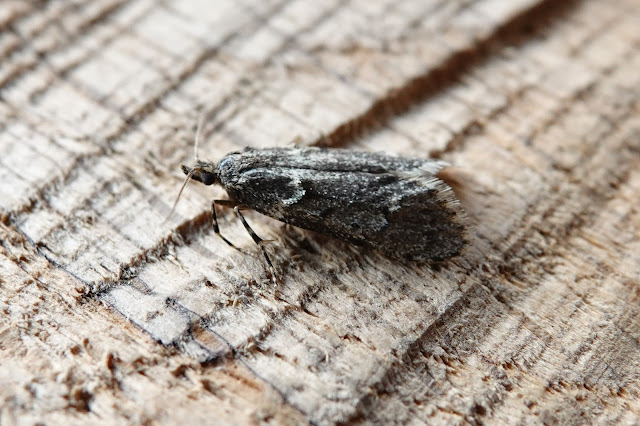 |
| March Tubic |
 |
| Swallow Prominent |
 |
| Swallow Prominent |
 |
Puss Moth
|
 |
| Puss Moth |





























































































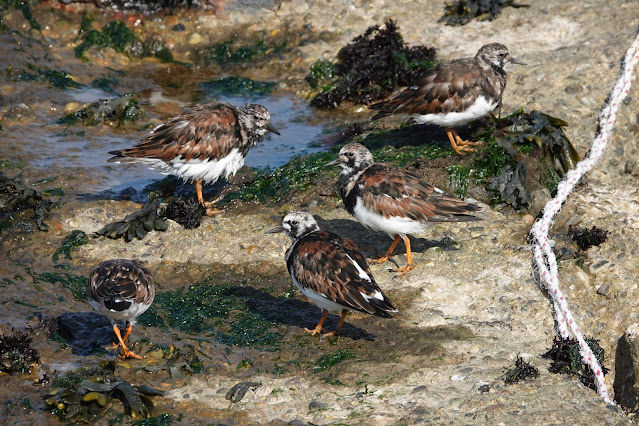
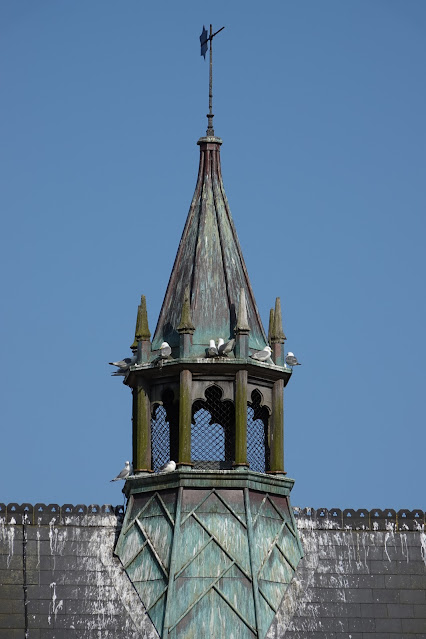



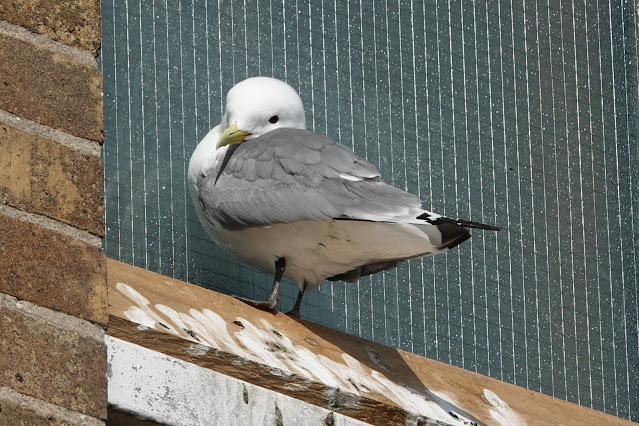





No comments:
Post a Comment